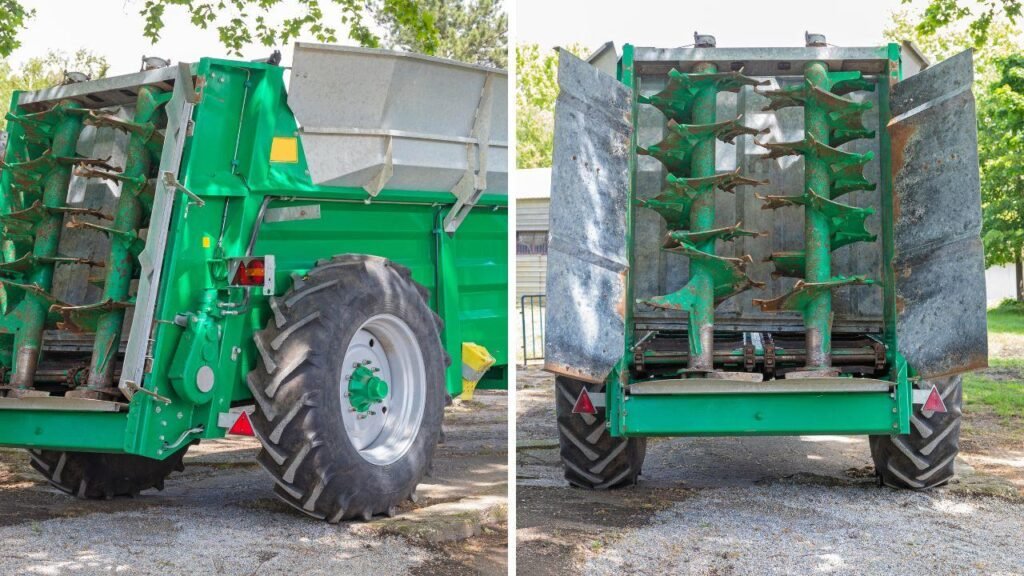What is a Manure Spreader the Rear? Manure spreaders play a crucial role in modern agriculture by efficiently distributing animal waste across fields. This practice not only helps recycle nutrients back into the soil but also enhances crop yields, making manure spreader an indispensable tool for farmers. In this article, we will explore the types, functions, and benefits of manure spreaders, as well as best practices for their use.
Understanding Manure Spreaders
A manure spreader is a piece of agricultural equipment designed to distribute manure evenly over farmland. It serves to improve soil health by providing essential nutrients to crops, such as nitrogen, phosphorus, and potassium. By utilizing manure, farmers can reduce their dependence on chemical fertilizers, which can be costly and environmentally harmful.
Types of Manure Spreaders
There are several types of manure spreaders, each suited for different types of manure and farming practices. The most common types include:
- Vertical Auger Spreaders: These spreaders use a vertical auger system to mix and distribute the manure. They are effective for handling various types of manure, including those with high moisture content.
- Horizontal Auger Spreaders: Similar to vertical augers but with a horizontal mixing system, these spreaders are designed for drier manure types and provide an even application over a wide area.
- Box Spreaders: These are simple, robust units that are typically pulled behind a tractor. They have a large box that holds the manure and uses a floor chain to move it to the back for spreading. Box spreaders are versatile and can handle various types of manure.
- Broadcast Spreaders: These spreaders work by throwing manure across the field, providing a quick and efficient way to cover large areas. They are ideal for spreading drier manure types.
- Liquid Manure Spreaders: Designed specifically for liquid manure, these units can inject manure into the soil or broadcast it across the surface, making them suitable for managing slurry or digestate.
Key Components of a Manure Spreader
Understanding the components of a manure spreader can help users maximize its efficiency:
- Hopper: The main container that holds the manure before it is spread.
- Agitation System: Keeps the manure mixed and prevents it from settling, ensuring a uniform application.
- Discharge Mechanism: This could be an auger, a chain, or a hydraulic system that transports manure from the hopper to the spreading area.
- Spreading Mechanism: Determines how the manure is distributed—whether in a wide broadcast or narrow bands.
Benefits of Using Manure Spreaders
The use of manure spreaders comes with several benefits:
- Nutrient Recycling: Manure is a rich source of nutrients essential for plant growth. Using a manure spreader helps recycle these nutrients back into the soil, improving soil fertility.
- Soil Structure Improvement: Manure can enhance soil structure, promoting better water retention and aeration, which are crucial for healthy crop growth.
- Cost-Effective Fertilization: Using manure can reduce the need for synthetic fertilizers, resulting in lower costs for farmers.
- Environmental Benefits: Proper application of manure helps prevent nutrient runoff into waterways, contributing to better environmental stewardship.
- Time Efficiency: Manure spreaders allow for quick and uniform distribution of manure, saving time and labor compared to manual methods.
Best Practices for Using a Manure Spreader
To ensure effective and responsible use of manure spreaders, consider the following best practices:
- Choose the Right Spreader: Select a manure spreader suited to the type of manure you are using and the size of your fields.
- Regular Maintenance: Routine maintenance is essential for the efficient operation of a manure spreader. Check for wear and tear, lubricate moving parts, and ensure that the discharge mechanisms are functioning properly.
- Application Timing: The timing of manure application can significantly impact its effectiveness. Apply manure when crops are actively growing to maximize nutrient uptake.
- Proper Calibration: Calibrate the spreader to ensure the correct application rate. Over-application can lead to nutrient runoff and environmental harm.
- Consider Weather Conditions: Avoid spreading manure before heavy rain, as this can increase runoff and lead to pollution.
Maintenance and Care for the Rear Pan
Maintaining the rear pan is essential to ensure its longevity and effectiveness. Here are some tips for proper care:
- Regular Inspections: Inspect the rear pan regularly for signs of wear or damage. Look for cracks, rust, or other issues that could affect its performance.
- Cleaning: After each use, clean the rear pan to remove manure residue, which can cause corrosion over time. This practice also prevents the buildup of harmful bacteria.
- Lubrication: If the rear pan includes moving parts, such as beaters, ensure they are properly lubricated to prevent wear and tear.
Conclusion
In summary, the rear pan is a crucial component of a manure spreader that significantly influences its performance and efficiency. By facilitating even distribution, controlling manure flow, and improving material handling, the rear pan enhances the effectiveness of manure application in agriculture. Proper maintenance of this component can lead to better soil health, reduced environmental impact, and improved operational efficiency for farmers.
Understanding the role and importance of the rear pan can help farmers make informed decisions about their manure management practices, ultimately contributing to more sustainable and productive farming operations.



More Stories
Elevate Your Home with the Best Interior Designers in Kochi
Elevate Your Bathroom with Brass Bathroom Accessories
A Comprehensive Guide to Gate Installation